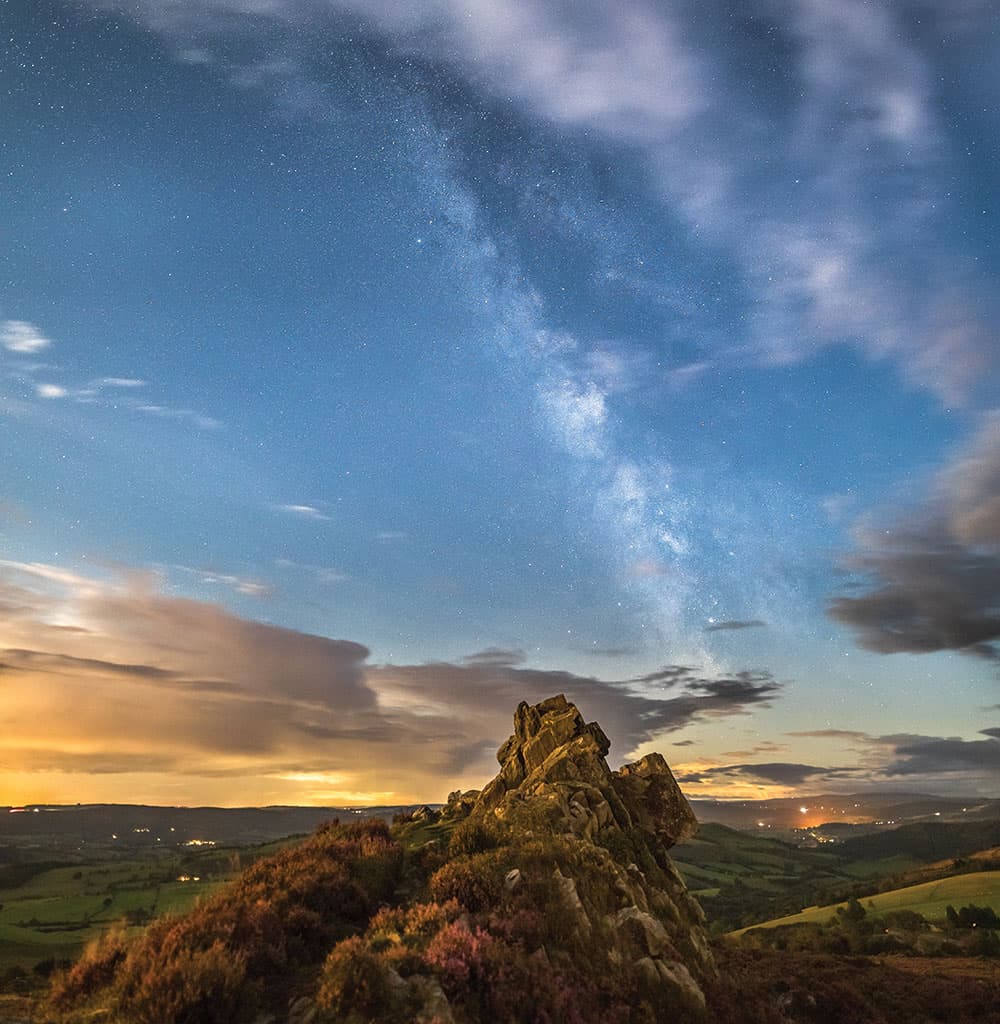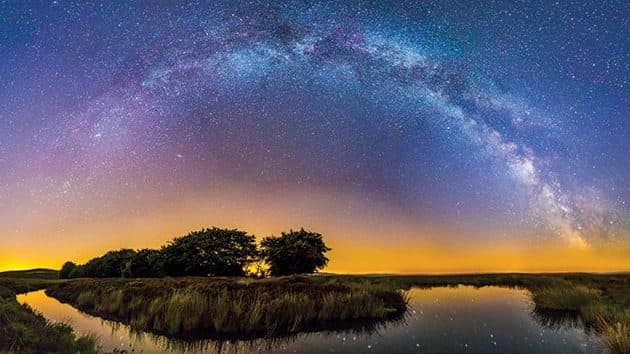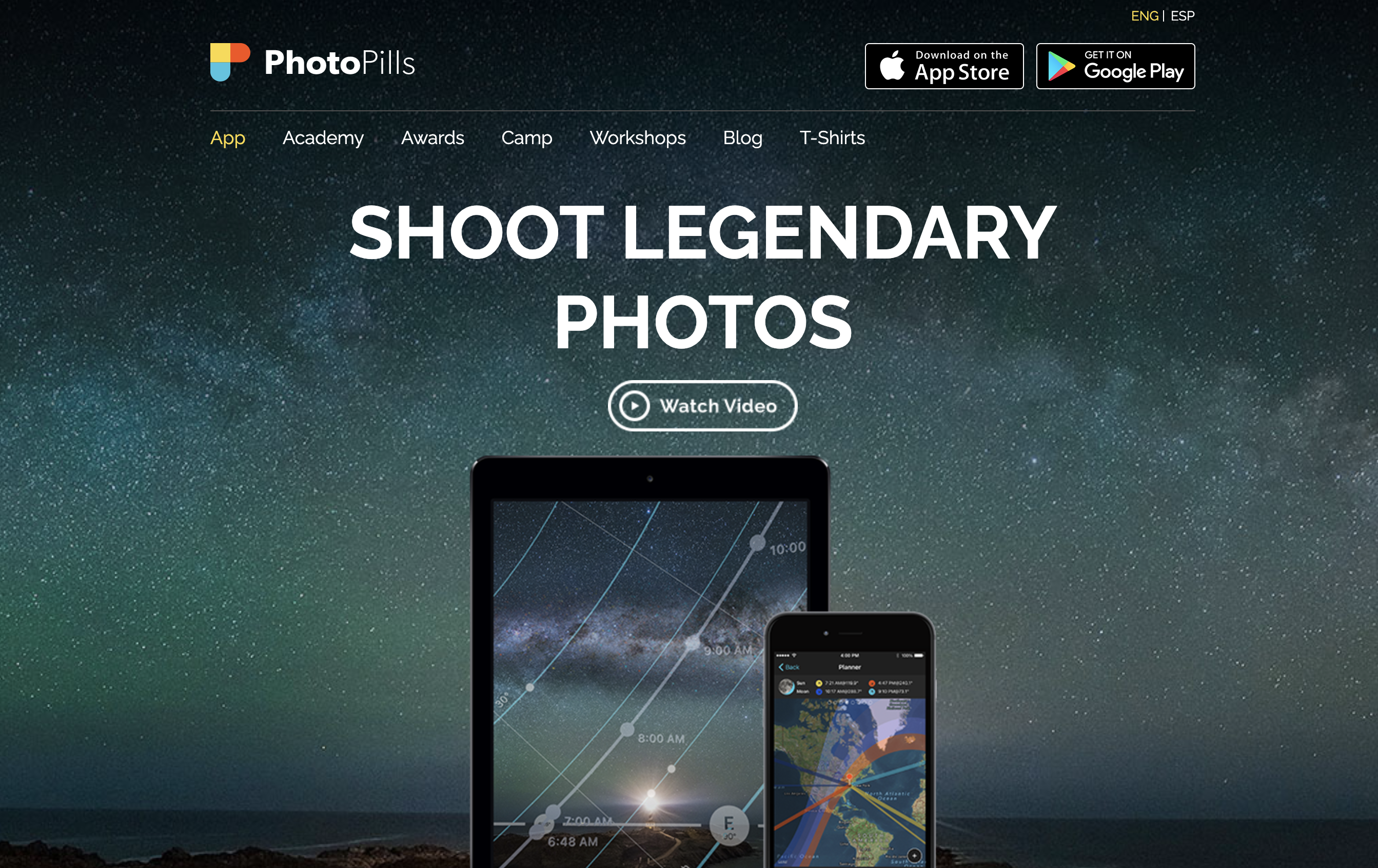Whether your night photography is chasing the elusive Milky Way or showing the motion of the stars and creating star trails, there is much to get right in advance: the location, time of year, and night, the weather, and camera settings. And afterwards, post-processing to bring the heavens into frame. Read on to discover some tips and tricks on how to photograph stars and the Milky Way with sparkling results.
And when you’ve finished, don’t miss our guide on how to photograph the moon.
How to photograph stars: Timing
Shooting landscape photography that incorporates the Milky Way requires a fair amount of research and planning. First, the galactic core itself, which gives such oomph to night shots, is not visible in the Northern Hemisphere during winter. April is the first month to start planning your shoot, and September the last. The PhotoPills app will help you plan your shoot on or around the new moon; since with moonlight, the Milky Way appears washed out. The app also gives information on when astronomical twilight is over and the stars are fully visible.
For more on the best apps for photography, see our guide.
How to photograph stars: Location
Once you have a clear night, with little wind and no moon, choosing a location is your next priority. The vast grandeur of the Milky Way requires a good foreground to anchor the final picture. There are many foregrounds that suit the Milky Way, from water to rocks, old buildings, hills, mountains and silhouetted trees. The only essential requirement is for there to be as little light pollution as possible, and you can find the best places by using sites such as Dark Site Finder.
Unfortunately, the UK does not have many light-free areas, so if there is a distant glow from a town, try to make it work for you as part of the picture. Here is your chance to do something different. Several of the spots I have worked at had never been photographed at night, so it was a joy to do something fresh and different. Think outside of the box – and that doesn’t mean another clichéd shot of a ‘person with headtorch’ shining up at the Milky Way!

How to photograph stars: Setting up
Setting up your shot when you want to photograph stars, requires thought, practice and patience. Remember, the Milky Way is in constant flux, so you want to be on-site in plenty of time to set up. The Milky Way moves from southeast to southwest over the summer months, so position your camera and tripod facing this direction. If your land feature is a rock formation, one aim is to have the diagonal of the Milky Way (rising from right to left) coming out of, or over the rock.
It’s important to think of the overall composition. Again, the Sky Guide app is useful, as the virtual view shows exactly where and when the Milky Way will rise, and most importantly when the galactic core is visible.
How to photograph stars: Focusing
Once you have an idea of your composition, there are various ways to focus when you want to photograph stars. I have found using live view with a torch, or having a friend aim their torch onto the foreground, both work pretty well. Some Astro shooters swear by focusing on the stars, but infinity on wide lenses such as the Samyang 14mm f/2.8 or the Sigma 14mm f/1.8 is pretty close, so anything focused over two to three metres away is sharp all the way to the stars themselves.
Check out our guide on how to focus manually.
It’s worth noting that the rising Milky Way looks pretty dull and nothing like most published astro shots. Start with a tungsten white balance, as this can be warmed up later if needed.

How to photograph stars: Post-processing
Our eyes are not good at night vision and the raw file is just the start of a processing journey. With a good raw image, bring up shadows and blacks (unless you want a silhouette). Use an adjustment brush on the stars to bring up exposure, clarity and contrast to taste. There is much more detail in the raw, and I like to think of a good astro photograph as showing an owl’s eye view. There is nothing wrong with adding punch to your picture but don’t overdo it. A mask sharpen filter in Photoshop can help ping out the stars, and if necessary, run Nik Define to reduce noise. The result should portray the glorious potential of the sky.
Once you have mastered the basics, then it’s time to take it up a notch. With a geared or panoramic head, try for a Milky Way panorama.
One of my best Milky Way shots was when I went out for Aurora (no-show in Shropshire!). I thought I’d might as well set up for astro and as I did, the full moon rose in the east. Ignoring all that I had learnt, I continued shooting and one photo came out perfectly, with foreground rocks on the Stiperstones, the full-moon light turning the valleys strange and ethereal, and the Milky Way leading up and vanishing into the high clouds. Learn the rules, then try for something new.
10 simple Steps for the Best Camera Setup for Astrophotography
- A full-frame camera that can cope with high ISOs is recommended for this type of work. Often you are dealing with a fair amount of dynamic range.
- Raw all the way! Shooting in raw gives you so much more control over processing your final file, to recover shadow detail and dial down bright starry highlights if needed.
- Use the 500 rule to avoid trailing stars. This is 500 divided by the 35mm equivalent focal length. So, 500/14 for the Samyang equals 35 seconds. In practice, I try to shoot shorter – around 25 seconds.
- Shoot in manual or bulb mode. If using a 14mm f/2.8, start with ISO 3200, 25 seconds, f/2.8 and alter ISO to suit.
- Use live view as it causes less vibration when the shutter opens and closes.
- Your head torch can now help you focus on the foreground you have picked. Use live view to focus, then turn off AF. The Sigma 14mm f/1.8 is sharp to infinity beyond about three metres, even wide open.
- Because of the shape of the Milky Way, it is often better to set it up in portrait mode, with the Milky Way as a diagonal lead-in line.
- It’s important not to touch the camera at all, so use a remote cable to get the sharpest image possible.
- Take lots of test shots, and adjust settings and position accordingly to make sure your horizon is straight.
- Don’t worry if the image on the back of your camera looks slightly dull. The raw file is only step one on the journey to bringing the stars to life.

Kit list for photographing stars and the Milky Way
Tripod
A strong, lightweight tripod is essential for the long exposures needed to capture stars, as well as a geared head for precise adjustments to frame both foreground and sky. I use the Manfrotto 055 Carbon Fibre with the Xpro Geared Head.
Fast wide-angle lens
The superb new Sigma 14mm f/1.8 has completely changed my shooting, enabling me to go wide open with a lower ISO. The Samyang 14mm f/2.8 is a fantastic budget lens which is surprisingly sharp.
Check out our guides to the best Canon EF lenses, best Nikon F-mount lenses, Best Sony E-mount lenses and best Micro Four Thirds lenses.
Sky Guide and any weather app
The right weather is crucial to a good night shoot. Checking weather updates right up until heading out is essential. A clear night with no moon is best for the Milky Way and stars. Sky Guide has a superb overlay to check out where the Milky Way is, in order to frame your shot.
Andrew Fusek Peters is a conservation photographer and nature writer. He is currently on commission for the National Trust and Natural England on Shropshire’s uplands. His books include Wilderland, Upland and the National Trust guidebook for the Long Mynd. www.fusekphotos.com.
Further reading
- The best cameras for astrophotography
- A guide to night landscape photography
- Get better night shot cities
- Essential guide to astrophotography
- Milky way photographer of the year
Follow AP on Facebook, Twitter, Instagram, YouTube and TikTok.









